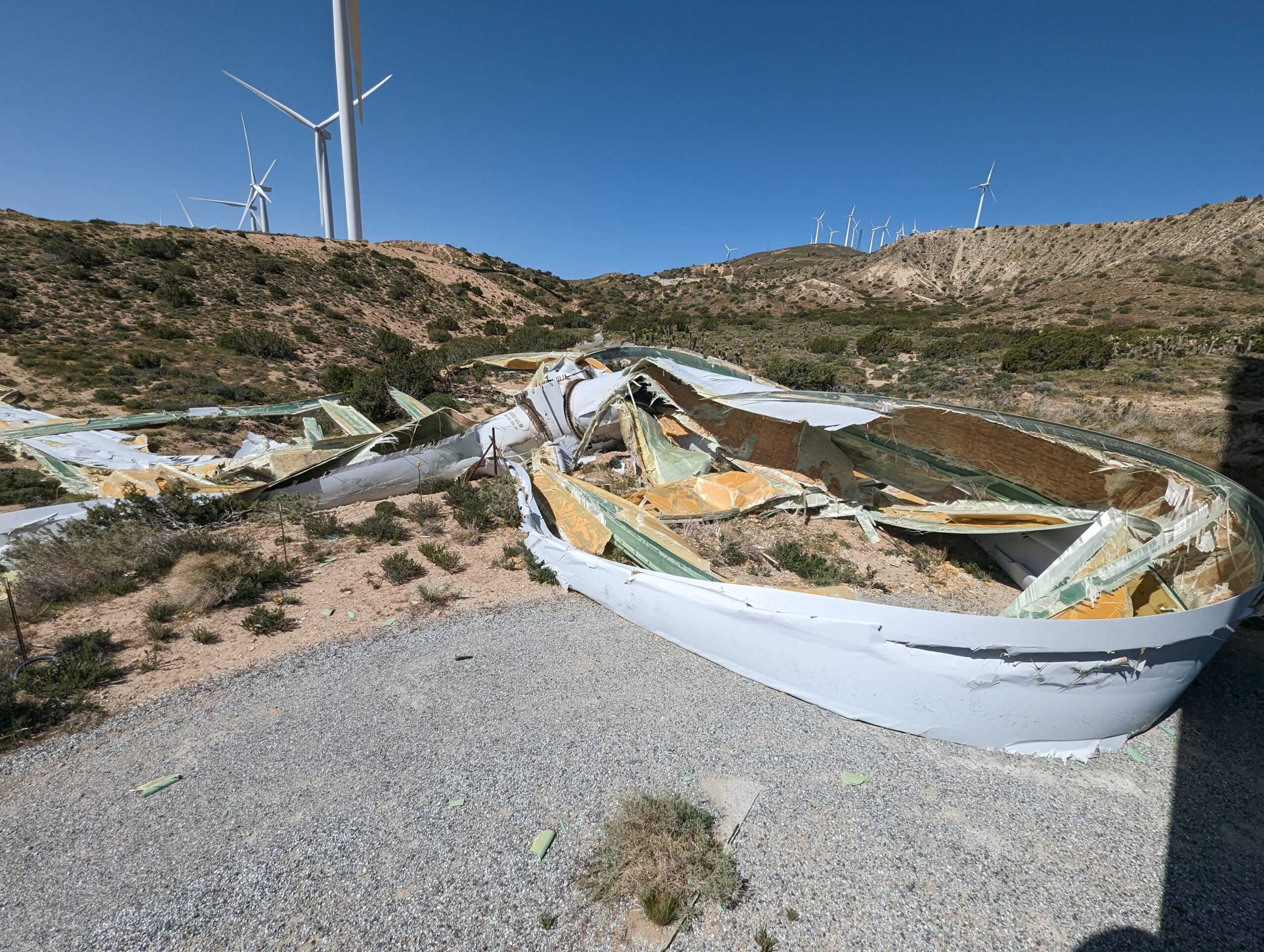Successfully Managing a Decommissioning Project: Insights from Pearce Renewables Wind Team
June 28, 2023

There is something majestic about a 280-foot wind turbine soaring up nearly 300 feet, creating energy by harnessing the power of nature. These giants of renewable industry require great care to maintain their towering heights. Though every effort is made to repair damaged towers and restore them to full functionality, in the event of catastrophic damage full decommissioning is required. Decommissioning projects require careful planning and execution to ensure the safe and efficient removal of equipment. The Pearce Renewables wind team recently completed such a project, providing valuable lessons and best practices for future decommissions. Here we examine the key project considerations, challenges faced by our on-site team, and the importance of effective communication in large-scale collaborative work.
Identifying the Root Cause: The Need for Decommissioning
Understanding the reasons behind a decommissioning project is crucial for effective planning and decision-making. In the case of this project, the primary cause was damage resulting from a lightning strike. Although every effort is made by our team to repair damaged turbines, in this instance, the damage sustained was too extensive, leading to the decision to decommission the tower entirely.
Additionally, environmental factors played a significant role in the decommissioning process. High wind speeds in the area made it impractical to repair the tower, and future wind forces could cause similar damage. By decommissioning the affected tower, the team mitigated potential risks and helped ensure the safety of future installations by not having to work around a damaged tower.
Preparing for Success: Thorough Homework and Equipment Assessment
One of the initial challenges encountered by the Pearce team was the limited time available for conducting detailed assessments prior to arriving on site. With critical insurance deadlines to meet, the team realized the significance of gathering essential information to determine the correct approach. Jeffrey Larson, a key member of the on-site team, highlighted the importance of thorough site and scope assessment to ensure equipment compatibility.
In the case of tower decommissioning, acquiring tower and site blueprints, identifying Major Component Exchange (MCE) lifting requirements, and understanding the configurations, weights, and tooling specifications for each individual project become crucial. This information guides the decision-making processes and ensures our team arrives on-site with the right equipment regardless of scale.
Diverse Decommissioning Options: The Right Tools for the Job
When it comes to decommissioning wind turbine towers, there are different approaches to consider. The decision often depends on factors such as insurance requirements, project specifications, and site conditions. In this recent project, Jeffrey Larson noted that if insurance assessment was not a concern, the team could have utilized robotic lasers or cutters to dismantle the towers with even more efficiency. However, when insurance assessments are necessary, coordination with the insurance company becomes a priority. In such cases, towers are safely lowered with the aid of cranes, allowing thorough inspections and reporting.
Communication and Collaboration in Project Timelines and Resource Allocation
The success of any decommissioning project lies in clear and transparent communication between the Pearce Renewables project team and the site owners. Maintaining open lines of communication allows for the exchange of vital site information and enables our team to address any challenges promptly. By working closely with site owners and stakeholders, the Pearce team can tailor our approach to specific project requirements, ensuring a smoother and more efficient decommissioning process.
Additionally, having a clear understanding of the time frame and resource allocation is crucial. For comprehensive teardowns, including the removal of all equipment from the site, a typical turnaround time for the Pearce team ranges from three to four days for tower disassembly. The subsequent stages, such as cutting the tower sections and blades, hauling the equipment away, and site restoration, may take an additional two to four weeks, depending on the project's scale.
Recommissioning and Repair Opportunities
While some decommissioning projects require the complete removal of equipment, often repair and recommissioning options exist. In scenarios where damage is localized, our team of experts can replace specific components, such as tower sections or blades, to restore functionality. By partnering with an experienced team like ours, we can provide comprehensive repair re- or de-commissioning options in a safe, strategic, and cost-effective timeline.
For more information on how Pearce Renewables Wind Team can assist with your recommissioning and decommissioning projects, contact us directly at info@pearce-renewables.com.
